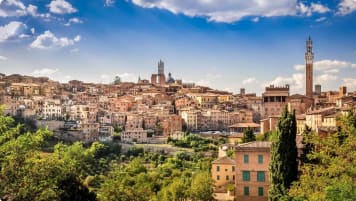Ancient Roman Luxury Villas
Roman houses for wealthy people built in the times of the Republic and the Empire. Popular locations included on the lakes of Northern Italy, in the hills to the East of Rome, on the bay of Naples, and outside of Pompeii.
17 Apr 20 · 4 mins read

Ancient Roman Luxury Villas
By Marco Stojanovik
Ancient Roman villas, prominent country houses for the affluent during the Republic and the Empire, were strategically situated in various picturesque locales such as the lakes of Northern Italy, the hills east of Rome, the bay of Naples, and the outskirts of Pompeii. Primarily serving as serene retreats from urban chaos, these villas were not just havens of relaxation but also potent symbols of their owners’ wealth and social standing. Evolving over time, these estates grew increasingly opulent and grandiose, transforming into expansive compounds featuring lavishly adorned chambers and sprawling gardens.
The tour organized by Odyssey Traveller delves into the realm of Ancient Roman Luxury Villas, forming an integral part of our 13-day guided exploration of the lakes and landscapes of Northern Italy. Journeying from Milan to Venice, participants are treated to a visual feast of the region’s vibrant lakes, crystalline seas, rugged mountain borders, vineyards, and historic towns like Verona, Trieste, and Trento. An unmissable highlight includes a visit to the opulent villa of Desenzano nestled on the captivating Lake Garda, fringed by charming mountain hamlets and peaks. This article aims to delve into the rich historical tapestry woven by these luxurious villas, offering valuable insights to enrich your touring experience.
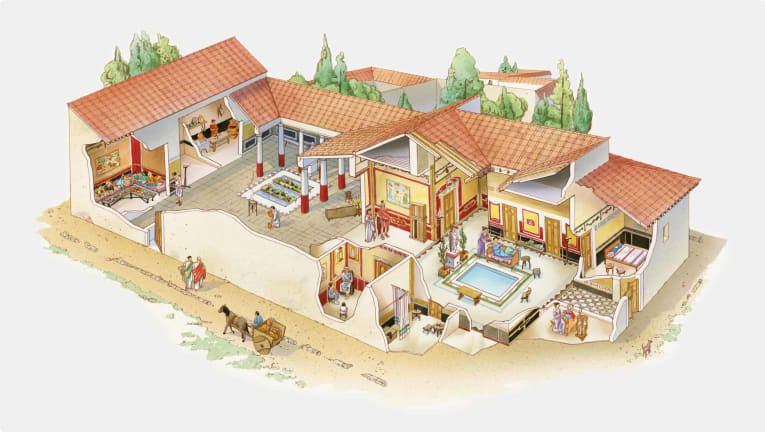
A Retreat from City Life
The ancient Roman villas, typically situated outside urban areas in rural, suburban, or coastal settings, served as retreats for affluent Romans seeking respite from the bustle of the city. These opulent structures were more than just physical escapes; they symbolized a philosophical concept known as “otium,” offering a serene environment for intellectual pursuits and spiritual contemplation.
This tranquil setting, surrounded by nature, provided a necessary contrast to the bustling city life filled with economic demands, referred to as “negotium.” In essence, these villas were not merely luxurious estates but sanctuaries where the mind could be enriched through study and reflection, away from the pressures of daily urban life.

Types of Villas
Pliny the Elder, a prominent Roman writer from 23-79 CE, categorized Roman villas into two distinct types: the villa urbana, a countryside retreat near the city for brief stays, and the villa rustica, a functional agricultural estate constantly manned by workers and overseers.
Villa rusticas were often self-sustaining entities, boasting olive groves, vineyards, and the necessary infrastructure for processing agricultural yields, with a specific focus on the production of wine and olive oil. Even the most opulent villas commonly featured a pars rustica, the productive segment, alongside the pars urbana, dedicated to leisure and residential activities.
Suburban villas, known as villa suburbana, were also prevalent, especially around cities like Rome, Pompeii, and the Bay of Naples during the height of the Roman Empire.
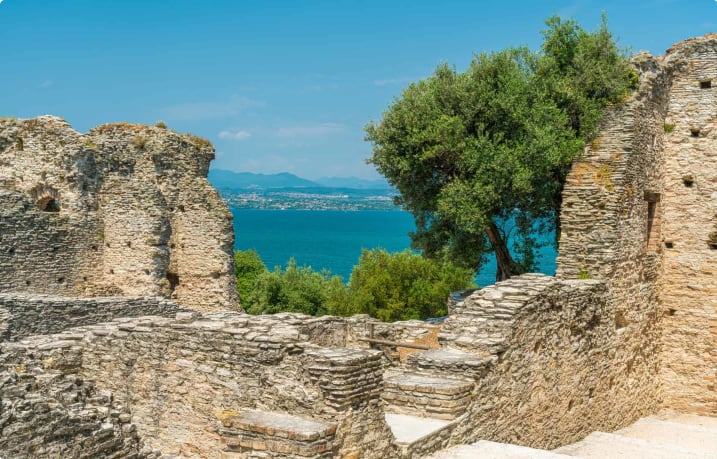
Luxurious Villas’ Features
During the height of the Roman Empire, the concentration of wealth among the elite elevated the opulence of Roman villas to new heights. These extravagant estates served as potent symbols of power, adorned with lavish embellishments such as intricate mosaic floors, wall paintings, and marble sculptures, all indicative of the high social standing of their owners.

The architectural diversity of these luxurious villas notwithstanding, they can be best described as extensive compounds comprising various sections. These grand residences boasted numerous rooms dedicated to entertainment, dining, relaxation, and hospitality, alongside specialized amenities like hypocaust-heated baths. The layout often revolved around central courtyards, while expansive gardens teeming with diverse plant life, encircled by colonnades, seamlessly merged with the natural surroundings.
One of the most remarkable examples is the sprawling Villa Adriana, Emperor Hadrian’s magnificent retreat nestled in Tivoli, east of Rome. Spanning over a square kilometer, this grand complex encompasses more than 30 structures, featuring pools, baths, fountains, a blend of Greek and Roman architectural elements, meticulously landscaped gardens, untamed wilderness areas, and productive farmlands.
The Roman Villa of Desenzano del Garda
The Roman Villa of Desenzano del Garda stands as a testament to the grandeur of late antiquity in Northern Italy, occupying a sprawling hectare of land along the picturesque southern shore of Lake Garda, the largest lake in Italy. Named after its proprietor Magnus Decentius, who vied for control of the western Roman Empire against emperor Constantius II, this villa remains remarkably well-preserved and holds significant historical importance.
Exploring the ruins of this villa unveils a complex array of structures that once thrived within its grounds. Among its notable features were residential quarters, a grand formal dining area crowned by a dome roof, a wing dedicated to official gatherings, and rustic edifices tailored for agricultural pursuits. The villa also boasted a central courtyard adorned with statues, encompassed by colonnaded porticos, and a rear garden graced by ornate fountains, painting a vivid picture of ancient Roman opulence and refinement.
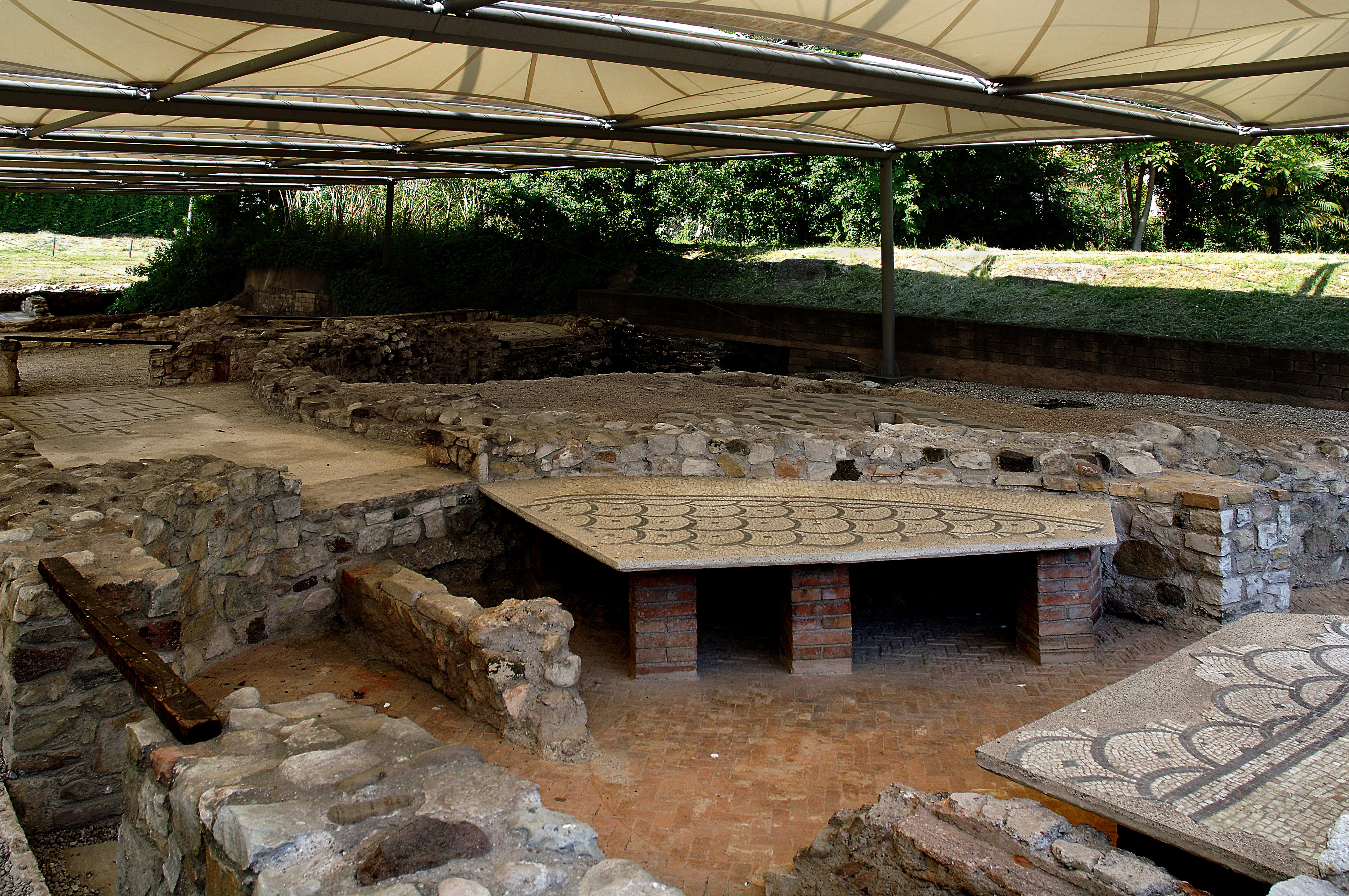
You can visit the Roman ruins of the once large and luxurious villa of Desenzano del Garda as part of our 13 day guided tour of the lakes and landscapes of Northern Italy. Enjoy the attractions of well-preserved vivid floor mosaics, a museum of artefacts collected during excavations, and stunning lakeside views.
Odyssey Traveller has been serving global travellers since 1983 with educational tours of the history, culture, and architecture of our destinations designed for mature and senior travellers. Tours consist of small groups of between 6 and 12 people and are cost inclusive of all entrances, tipping and majority of meals. For more information, click here, and head to this page to make a booking.
Articles about Italy published by Odyssey Traveller
- The Roman Empire
- Who were the Roman Emperors
- Questions About Italy
- Trip Advice for Travellers going to Italy
- 10 Great Books to Read Before You Visit Italy
- as well as more articles on Italy here
External articles to assist you on your visit to Italy
Related Tours
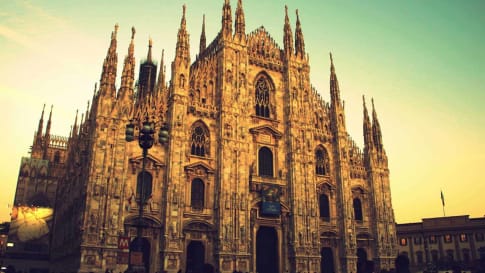
14 days
Sep, MayLakes and Landscapes of Northern Italy | Short Small Group Tour for Seniors
Visiting Italy
Our small group tour begins in the cosmopolitan city of Milan and ventures to 2 of the region's lakes - Garda and Maggiore. Our tour uncovers a wealth of natural beauty, castles, serene waters, snow-capped mountains, and breathtaking scenery.
From A$9,225 AUD
View Tour
